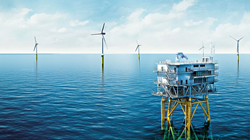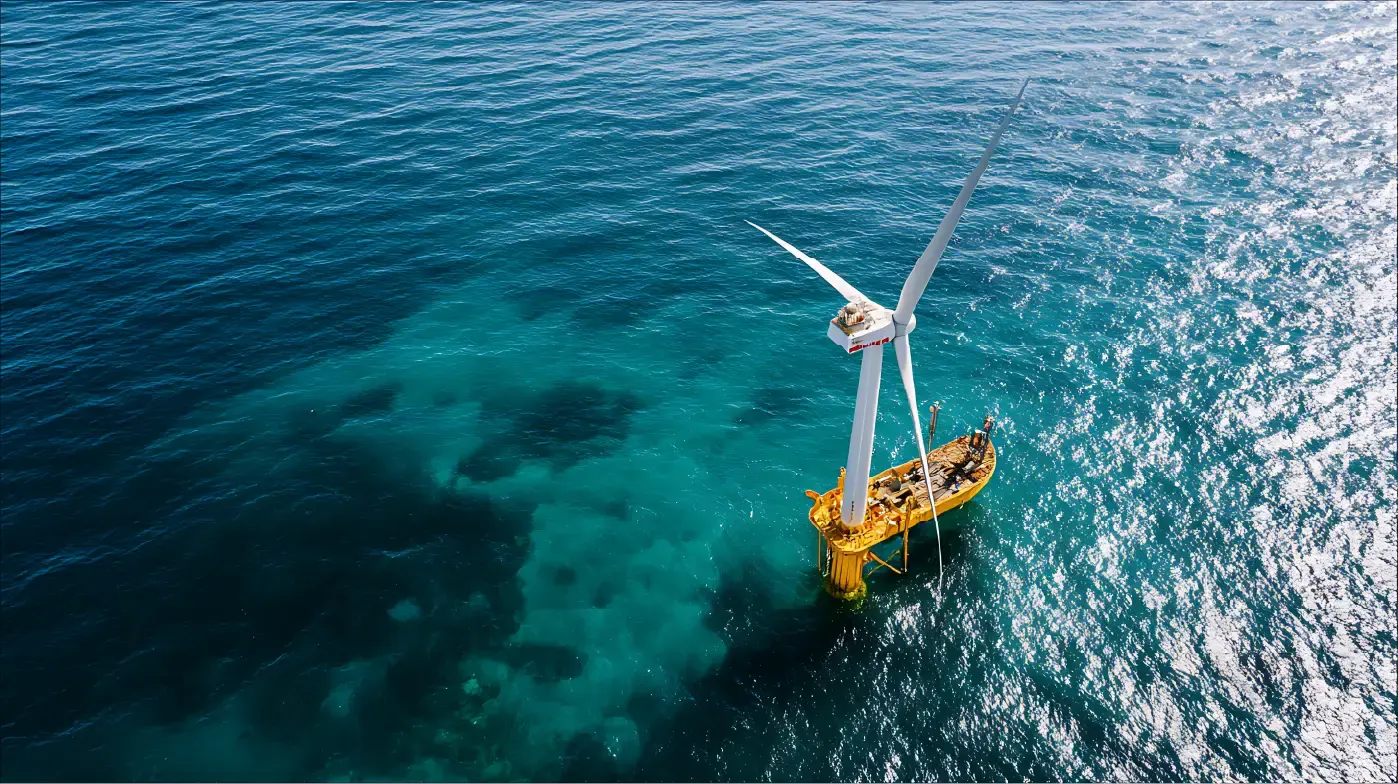.png)
The future of floating wind energy looks bright, as this technology has the potential to unlock new areas for wind energy development, particularly in deep waters where traditional bottom-fixed wind turbines are not feasible.
- Cost reduction: With advancements in design and manufacturing, the cost of floating wind energy is expected to decrease, making it more competitive with traditional forms of energy.
- Larger turbines: The trend towards larger turbines will continue, as developers aim to increase the efficiency and economies of scale of their projects.
- Wider deployment: The deployment of floating wind energy is expected to expand globally, as countries seek to reduce their dependence on fossil fuels and meet their renewable energy targets.
- Grid integration: The integration of floating wind energy into existing electricity grids is proceeding rapidly, as developers work with transmission and distribution companies to develop solutions that can handle the unique challenges posed by floating wind.
- Innovation: The continued development and refinement of floating wind technology is expected to drive new innovations, such as the use of hybrid systems that combine floating wind with other renewable energy sources, such as wave, solar and hydrogen production.
Some of the challenges facing the development and deployment of floating wind turbines in 2023 are:
- High cost: Floating wind turbines are still relatively new technology, and their installation and maintenance can be expensive compared to traditional wind turbines.
- Technological challenges: The design and engineering of floating wind turbines is complex and requires solutions for cabling, and mooring systems.
- Environmental impacts: The potential impact of floating wind turbines on marine life and the ecosystem is a concern, and further research is needed to fully understand these effects.
- Regulation and permitting: The development of floating wind farms may face regulatory and permitting challenges due to a lack of clear guidelines and differing regulations across different countries and regions.
At Jee, we provide expert engineering services to support the design, construction, and operation of floating wind farms. With a growing demand for clean energy, floating wind represents a significant opportunity for offshore energy production. Our team of experienced engineers and technical specialists have a deep understanding of the challenges associated with floating wind, from site selection and environmental impact assessments to mooring systems and electrical infrastructure. Whether you are a developer, operator, or investor in the floating wind sector, our team can provide a range of services to support your project. Contact us today to learn more about how we can support your floating wind engineering needs.


-1.png)
%20(1).png)

